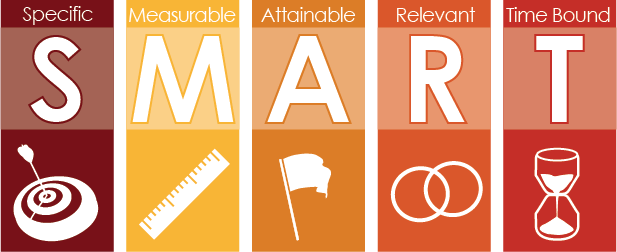6 Setting SMART Goals

A common tool for effective goal setting is developing SMART goals. SMART goals encourage you to create goals in a way that inspires you to make them happen.
SMART Goals Are
“S” – Specific
Your goal should clearly define what you’re going to accomplish. You’ll ask and answer what you’re working toward and why.
“M” – Measurable
Identify and define how you will measure your progress.
- How will you know when you’ve achieved your goal?
- When will your goal be finished? What is the due date?
“A” – Attainable / Action-Oriented
Your goal needs to be realistic and attainable within the time and resources that you have available.
- Is it possible for you to achieve your desired goal?
- Are you inspired to take action towards reaching your goal?
“R” – Relevant
Relevant and realistic goals are ones you’re willing to complete. Identify where this goal will take you. A goal can be both ambitious and realistic; you’re the only one who can decide just how high your goal should be.
“T” – Time Bound
Create a sense of personal obligation by setting due dates for each step along the way. Knowing when you must finish a task keeps you on track and accountable. [1][2]
- When does something need to be done?
SMART Goal Example
Consider this example. You could say that your goal is to become a better runner. This goal is undefined, and you will not be able to tell when you’ve achieved it.
A SMART goal would be, “You will train with a running group twice weekly and complete a ten-kilometer run in under one hour by the end of June”. This goal is time-bound and includes specific and measurable criteria that will help you know when you’ve reached your goal.
Try it!
Begin to set your learning goals for this semester. Choose 1 goal, and use the SMART goal system to make your goal relevant and achievable.

